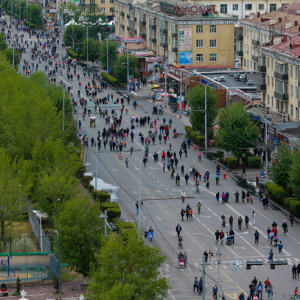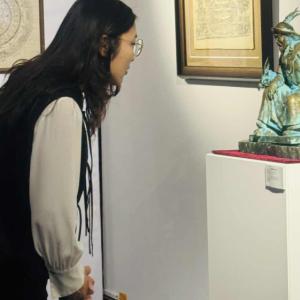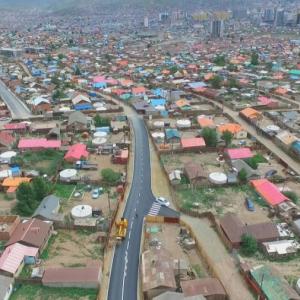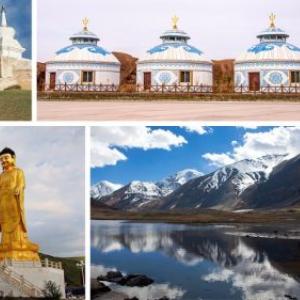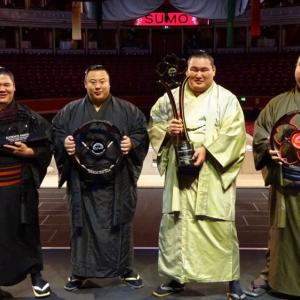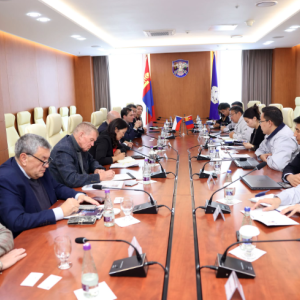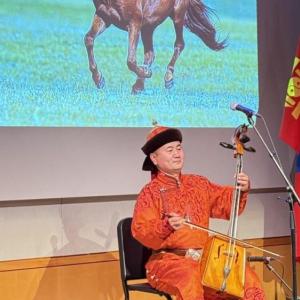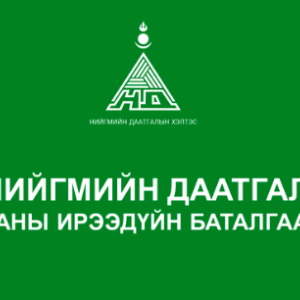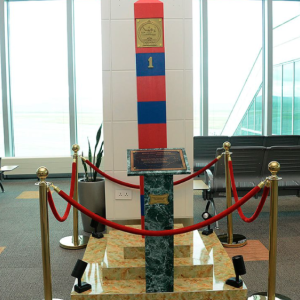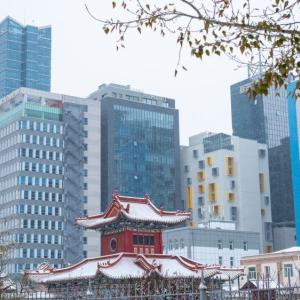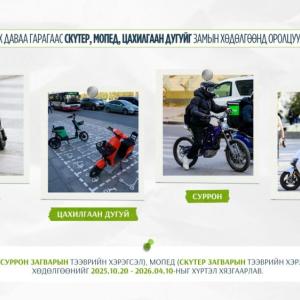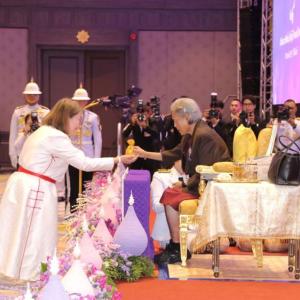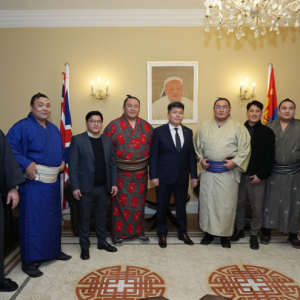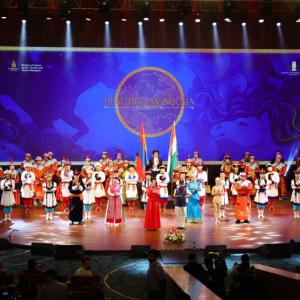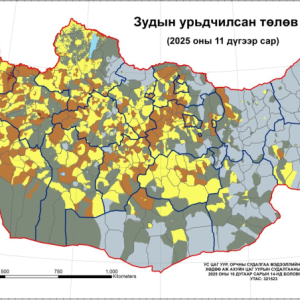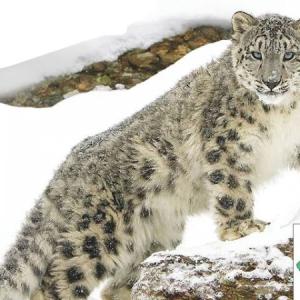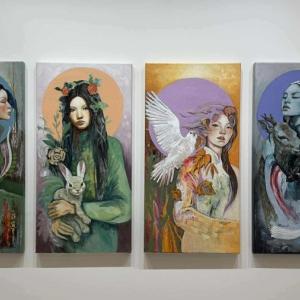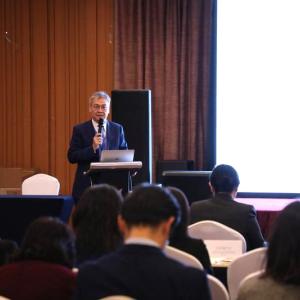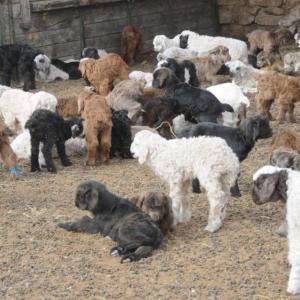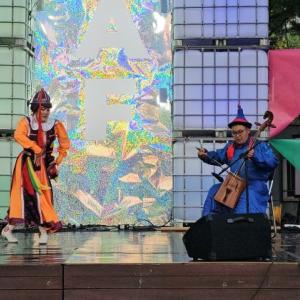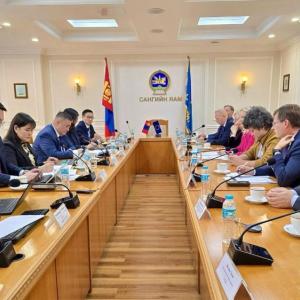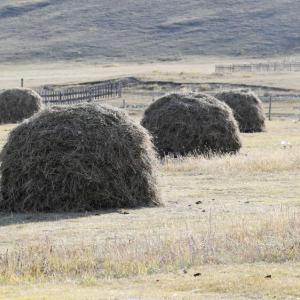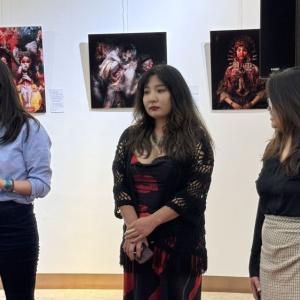Yak herders in the mountains’ midst
The Mongol Messenger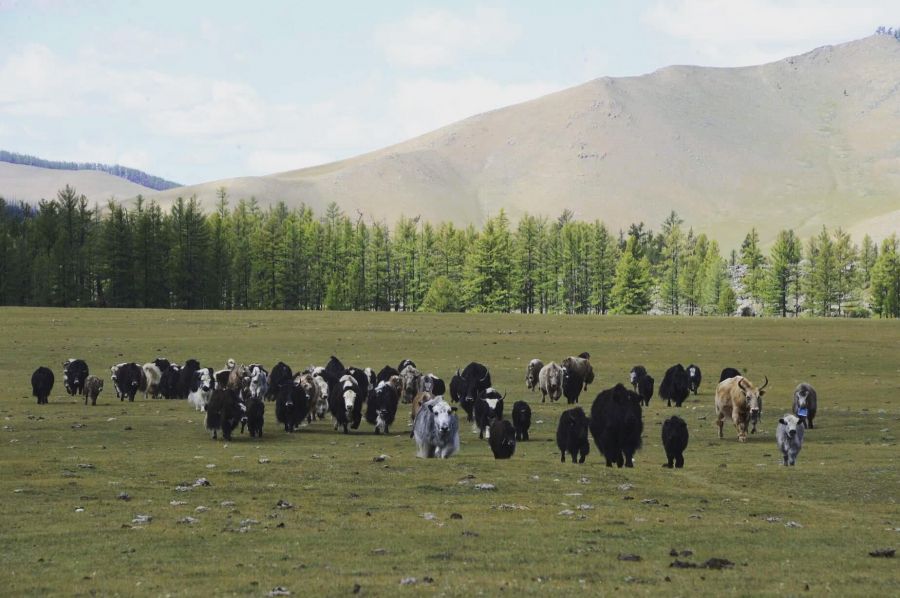
Ulaanbaatar /MONTSAME/.
I.
A certain species of livestock that lived in the midst of the Tibetan mountains, boulders and cliffs covered with snow for thousands of years is the yak. Alongside the Himalayas, yaks live near Tenger Mountain, and the mountainous areas of Arkhangai, Uvurkhangai, and Khuvsgul aimag as well as the forest steppe regions of Zavkhan and Bayankhongor aimag, spreading throughout 132 soums of 13 aimags in Mongolia. To learn more about the herding and the unique features of this particular animal considered as rather odd in the traditional livestock herding scene, a reporting team of MONTSAME National News Agency went on a journey to Ulaan am bagh of Bat-Ulzii soum, Uvurkhangai aimag to spend a day at the home of a herder named Batchuluun Sukhbaatar.
80 percent of the territory of Bat-Ulzii soum is under the state special protection. Thus, here - you will see woodland, taiga, the valley river, and volcanic rocks as well as the tall, tall trees reaching for the sky in the midst of all the rocks. From Bat-Ulzii soum, we headed northwest onto a rather bumpy, difficult road and crossed two bridges - just to continue on the challenging path with our car. Lush, green trees on each side of the road, with tall mountains surrounding it. With the waters of Orkhon River noisily flowing at the northern mountain slopes, the Bituud Valley looks absolutely charming in the first month of autumn.

At the end of the great wide valley, there is a camp referred to as “Buurug”. In the midst of all the trees and rocks, you will be able to catch a sight of the gers of families peacefully residing at their camp at the Khar Buluut river bank. When we finally saw the home of the herder family, there were no yaks in sight. Causing us to worriedly discuss whether they could have possibly not come down from the mountain yet, we finally got out of the car outside the ger of herder S.Batchuluun.
Despite the man in question having not been home as he had left for his livestock animals, we were able to spot him herding his yaks from the northwest hilltop not long after. The one to welcome us into their home shortly before is the housewife Ch.Battsetseg. At the sight of her husband, she began to walk towards the calves to tether them. It was right at that moment when the final ray of sunlight for the day managed to hide behind the forest covered mountains in the far distance.
The fresh scent of greenery, and a “duet” of the sounds of dogs barking and wind in the trees. This is the type of evening that would only arrive at the homes of herder families living in the mountainous pasture: a complete state of peace and tranquility only interrupted by a few sounds every now and then.
II.


The sun can be seen fully rising with reddish rays surrounding it in the plains. As for the taiga - and especially through the toono (roof) of S.Batchuluun’s ger, the rays of the sun would only bestow itself after 9 am in the first month of autumn. This is due to the tall hills and mountains covered with a thick forest to the north of their ger just closeby. Through the trees, the sun would “show off” its rays every now and then. It is during this time when housewife Ch.Battsetseg does most of her tasks for the morning: making tea, skimming the yak milk that was left out overnight after boiling, and rushing to her next task of milking the yaks. As for her husband S.Batchuluun, he is assigned with the task to separate the calves from the herd.


They are a family of four. They have a 5-year-old daughter named B.Buddulam, and a son named B.Budbileg who has yet to become 1 year old. “You will help out your mom with her tasks soon enough when you become big, won’t you?” Battsetseg says as she raises her son up to give a quick kiss on his cheek and heads out.
Their family has over 80 yaks, over 300 sheep and goats, and 20 horses. Each year, they receive about 30 calves. However, as summer was not quite good this year, they let most of their calves drink milk, tethering only 7 calves in order to milk their mother yaks. One of the biggest difficulties for herder families in the area is the issue regarding predatory animals. As wolves are commonly sighted in the mountainous area, half of the offspring received in a year often end up being eaten by them, said Batchuluun. “Yaks are generally very alert and timid, but it is merely a natural instinct for any living animal to protect their offspring. Despite our efforts to protect them by bringing them right outside our ger, the calves always end up being caught by wolves,” he continued.

Yaks are adapted to living in difficult weather conditions in mountainous areas. As its natural habitat is typically valleys between rivers and mountains with a lot of cliffs and boulders, an advantage of raising Mongolian yaks is that it is very unlikely for the species to have a negative impact on the carrying capacity of pastures.
Once the yaks were finished milking, Batchuluun put the male yaks he uses for transport in the animal pen. The family had decided to move their small ger to their autumn camp, preparing for the winter from early on.
I began to understand Batchuluun’s perception of yaks as he captured them. A leather lasso would be used to capture them as there is no other way of doing it. Made with yak leather, the lasso is made by narrowly cutting the hide and soaking it in salt water, then flattening it until it becomes soft. The youth of the neighboring families G.Ayurzana and D.Siirevnyambuu arrived to help Batchuluun with moving. In about half an hour, they captured 6 male yaks for the moving, tying them to logs lying in front of the fence.
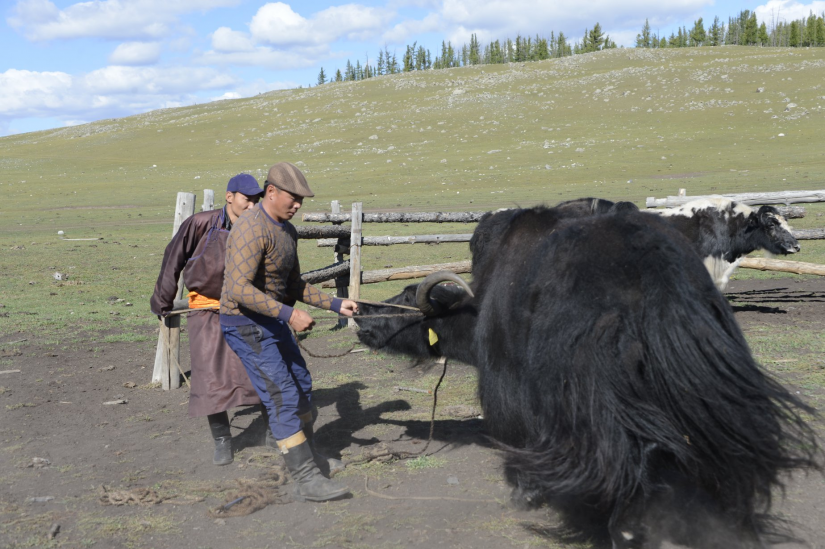
Despite being built with big, bulky frames, the male yaks are fine as long as they are tied to something as they are sensitive about their nose piece. Compared to the group of male yaks, a bull is about 20-30 percent larger, weighing 50-60 percent more. A fully grown bull weighs around 400-450 kg, while a female yak weighs 210-220 kg and a two-year-old male yak weighs 220-250 kg. Yak fat has a bright yellow color as it contains a large amount of carotene which creates Vitamin A, and its meat is quick to turn dark red through oxidation due to myoglobin. As for Batchuluun’s family, they only use the yaks for transport alongside combing its hair for wool fiber and milking. Due to its quite unique features, we mainly focus on raising the yaks and breeding them, he said.
During the summer, Batchuluun uses his yaks for tourists that arrived in Uvurkhangai aimag to see the region’s exquisite natural beauty, creating half of his income for the season. It is common for citizens in the Ulaan am bagh to provide accommodation as well as services with yaks for the arriving tourists. We decided to discuss more about the topic once he was done with his tasks for the day.

Because now is the time for lunch - and after this, he plans to tame several yaks in the wide open plot of land without any trees and rocks to the north of Ch.Batjav’s home. Before we knew it, the news about taming the yaks had spread throughout the households in Bituud Valley. Without even needing to ring their phones, Batchuluun’s friends quickly arrived at the site. The heartwarming friendship between peers became apparent to me from just that particular moment.
III.
Last year, the Tavan Tumen Sarlagiin Bayar (lit. The Fifty Thousand Yaks’ Festival) took place in Bat-Ulzii soum, Uvurkhangai aimag. In that exact location, hundreds of yaks are seen to be relaxingly grazing. As this is the most wide, spacious plot of land you can find in the valley, it is here that herders from near and far gather to challenge their balance and quick thinking by capturing Batchuluun’s yaks and seeing who could be on top of the yak for the longest. “Yaks tend to buck in a very odd manner. Compared to them, horses are much more stable,” they said.
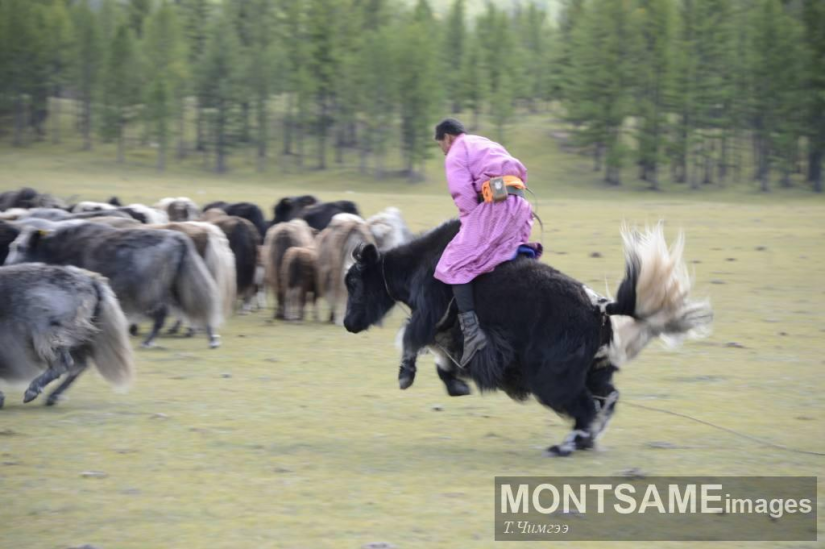

Next, they captured a large 2-year-old white yak with a lasso to pierce its nose and put a nose piece. A sharpened stick of wood is used to pierce the nasal septum, and kept there for several days. Once healed, they switch out the stick with a nose piece, which would be used to navigate the animal while riding it. The nose piece for yaks is made with fiber.


Underneath the wool, yaks have very fine hair. In spring, Batchuluun’s family comb over 30 yaks that are 2-3 years old for their wool and fiber. As for the other yaks, they naturally shed their wool as they go in the wind. Through combing, the family gets an average of about 20 kg of wool and fiber, which is sold for MNT 15000 and up for each kg. Furthermore, yak leather is also used to make a bag attached to the saddle, the rope used to attach the two pedals, lasso, the bridle/headgear worn on the animal for riding as well as the halter alongside making a “khum” floor covering, which is made by drying out the hide and flattening it until soft. Yak khum is very thick and warm. However, it is very rarely found for sale nowadays.
With its population of over 9,000 citizens and 336 thousand livestock animals, Bat-Ulzii soum is one of the leading soums in the aimag for its number of livestock. The soum’s Ulaan Am bagh alone has about 2,000 citizens and 122 thousand livestock animals, of which 26 thousand are cattle. Raised over 2,400 meters above sea level, the area is highly suitable to raise yaks, noted Deputy Governor of Bat-Ulzii soum L.Batchuluun.
Once the group of young men were done taming the yaks and putting on nose rings on some of them, their main task for the day was completed. After herding the yaks into the river, Batchuluun got on his horse to start his journey back home.

IV.
As we came back from the yak’s grazing area, Battsetseg was making cheese and cutting aaruul (curd) to dry them out later. “Yak milk is very thick due to its percentage of fat. That is how I am able to make milk tea by using only a liter of milk for 4 liters of water. We can also make “shimiin arkhi” (a milk-based alcoholic beverage) with the milk, too. The local families usually just give some aaruul for their older children when they set out to look for their herd animals. They do not have any problems of getting hungry or thirsty by the time of the evening when they come back,” she said as she lined up the cut aaruul on the ger to dry them in the sun.

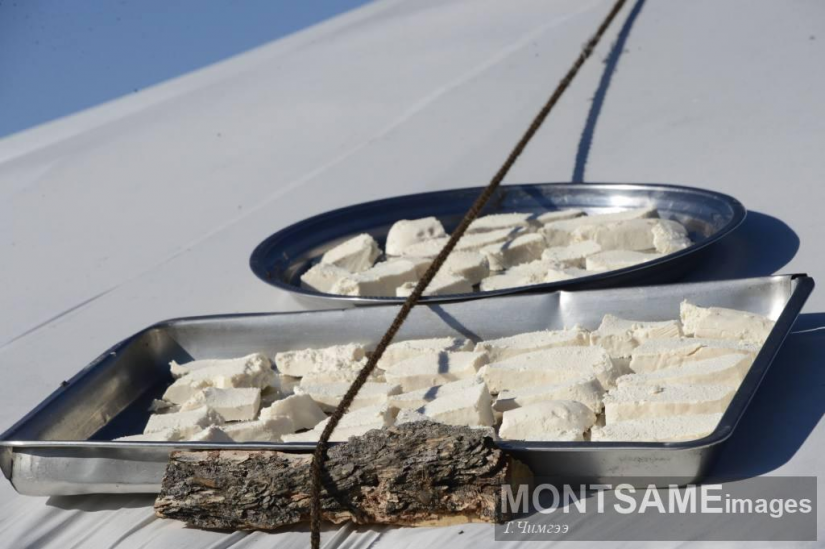
The families in Buurug will be moving in the northern direction. Once autumn is over, they will move again to a site named Bayannuur to the northeast. The family heads S.Batchuluun, G.Ayurzana, and D.Siirevnyambuu begins to disassemble the small ger, assigning all of the parts: walls, uni (polls that make up the roof), and toono (the ger’s upper frame) on six yaks. They seem to never stand around doing nothing. One folds the walls, while the other takes care of the rope used to tie together the walls and the door, putting it near the yaks. In its midst, Batchuluun leads all of the tasks, and finishes up putting the ger parts on the yaks and loosely puts its nose piece on its neck.
During winter, they have the yak set out in a single line by connecting them as the path has lots of obstacles including snow. As for autumn, the yaks carrying the ger are herded freely in a group. Interestingly, it is this particular animal that is able to carry their load in perfect balance through the ups and downs of tall mountains and its thick forests.

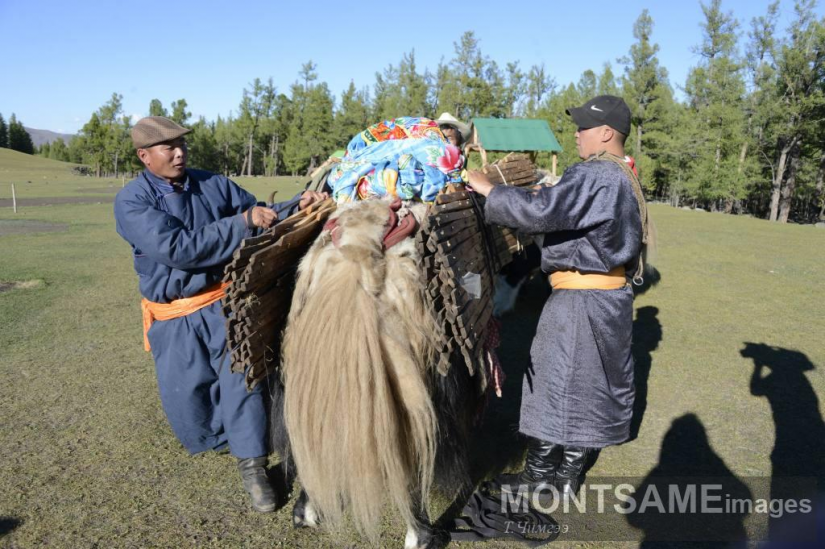
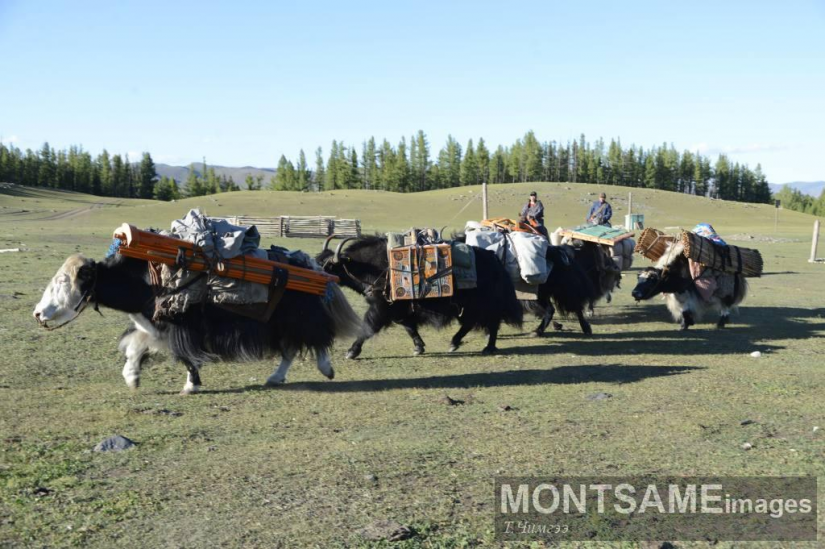
The autumn camp is located not very far from Buurug at an elevated level ground near a mountain slope. They say that the site is quite warm due to all the surrounding trees despite the cool temperatures of the season. Batchuluun stops the yaks he was herding and uses a lasso to capture each one to take off their loads. Our reporting team also gave a hand in building the ger.
If you look to the northeast from on top of the hill, there lies the gorge of Khar Buluut Mountain. Who knows how they move from here to their winter camp by going over that tall hill with that thick of a forest. Another thing that was unclear to me is how yaks came to habit in Mongolia from the tall Tibetan mountains and going across the Mongolian Gobi desert. The only thought I was certain of was that moving is a normal part of life for nomads, passed down from ancient times to modern day Mongolians. And up to this day, it has yet to be left behind or become forgotten.
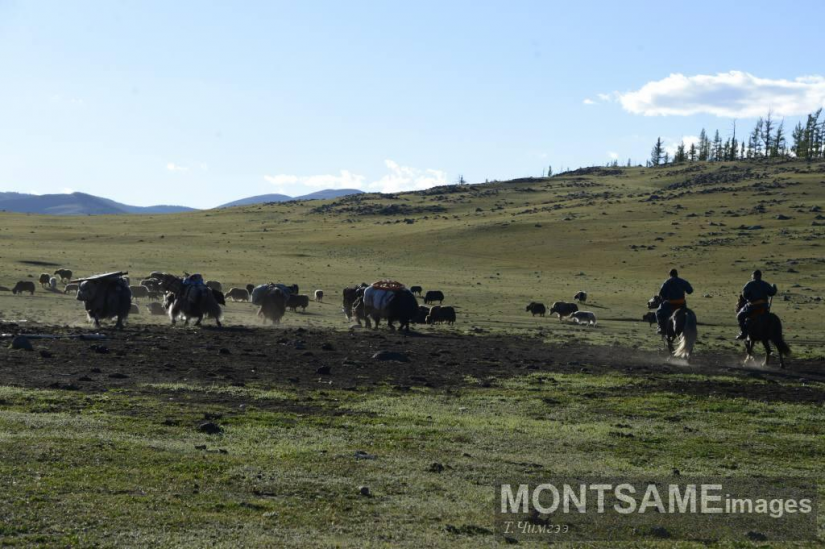
V.
The yaks that went onto the pasture earlier in the day had yet to come back. That gave us an opportunity to briefly have a chat with Batchuluun at the wooden shed to the north of his home before the sun goes down the northwest mountain. He increases his household income by offering services for domestic and foreign tourists during the summer alongside animal husbandry. “A lot of tourists tend to come around here in Buurug to go on and see the beauty of Naiman Nuur (lit. the Eight Lakes) of Uvurkhangai aimag. But this year, there were almost no foreign tourists that visited us because of the pandemic. However, we did have a lot of domestic tourists,” said Batchuluun. He transports various items being carried by tourists, such as tents and clothes, and also works as a guide. As it is hard to tell the personality of yaks, he has tourists ride a horse while he leads the yak himself. He earns MNT 20,000 from each tourist for his guide work in a single day. As for the horse and yak, the price for utilizing them is set at MNT 15,000. With this, he is able to annually earn an average of over MNT 20 million. It was only this year that he made a profit of over MNT 10 million.
He is contracted to work in cooperation with a travel company named ‘Horseback Mongolia’, conducting his work according to the given tasks to earn his payment. His family has even got the award, ‘Top Herder Family’, during the company’s new year’s celebration last year.
As the yaks finally came back during our chat, Batchuluun left off hurriedly to the animal pen with his wife Battsetseg to separate the calves from their mothers. To the east, we also saw two horsemen - the local neighbors that helped Batchuluun with moving the ger to the autumn camp, G.Ayurzana and D.Siirevnyambuu.

Some young male yaks are seen butting heads at the tether-rope, while others are lazily chewing on grass. While Batchuluun and his wife tie the calves to the fences, their 5-year-old daughter S.Buddulam hops off in their direction. The sun has already managed to hide behind the mountain, but it continues to spread out its warm yellow rays at the edges of the sky as if they are coming out from tree tops. And that was how a day in the life of a young herder family ended, working hard to utilize the benefits of their yaks. On our way back home, I realized that the highlight of our trip was the great friendship between the young men, their kind and hardworking spirit, and the warm, welcoming atmosphere the herder was able to create.
B.Altankhuyag
Photography by T.Chimgee





 Ulaanbaatar
Ulaanbaatar






